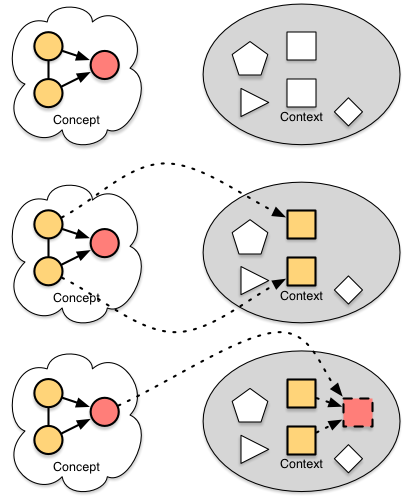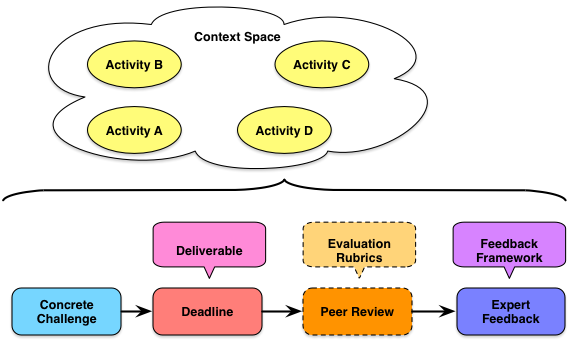So, I found an interesting inconsistency. I had to submit my deck for my DevLearn workshop on Cognitive Science for Learning Design last week, but oddly, for every thing I was recommending I had a diagram, except for the notion of using models. This is ironic, since diagrams can be used to convey models. It bugged me, so I pondered.
And then I remembered that I gave a presentation years ago specifically on diagrams. Moreover, in that presentation I had a diagram for a process for creating a diagram (Department of Redundancy Department). So, I finally got around to trying to apply my own process to my lack of a model. And voilà :
 The process is to identify the elements, and the relationships, and then additional dimensions. Then you represent each, place them (elements first, relationships second, dimensions last), and tune.
The process is to identify the elements, and the relationships, and then additional dimensions. Then you represent each, place them (elements first, relationships second, dimensions last), and tune.
Here the notion is that you have a mental model of a concept, capturing elements and causal relationships. When you see a situation, you select a model where you can map the elements in the model to elements in the context. Then you can use the model to predict what will happen or explain what happened. Which gives you a basis for making decisions, and adapting decisions to different contexts in principled ways.
Models are a powerful concept I’ve harped on before, but now I’ve an associated diagram. And I like diagrams. I find mapping the conceptual dimensions to spatial dimensions both helps me get concrete about the models and then gives a framework to share with others. Does this make sense to you, both the concept behind it, and the diagram to represent it?
I’ll be presenting this in the workshop, amongst many other implications from how our brains work (and learn) to the design of learning experiences. Would love to see you there.
 The empirical data is that we learn better when our learning practice is contextualized. And if we want transfer, we should have practice in a spread of contexts that will facilitate abstraction and application to all appropriate settings, not just the ones seen in the learning experience. If the space between our learning applications is too narrow, so too will our transfer be. So our
The empirical data is that we learn better when our learning practice is contextualized. And if we want transfer, we should have practice in a spread of contexts that will facilitate abstraction and application to all appropriate settings, not just the ones seen in the learning experience. If the space between our learning applications is too narrow, so too will our transfer be. So our